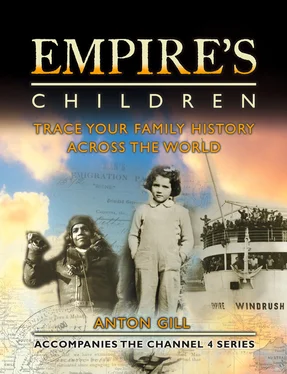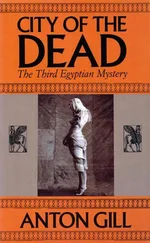HAVING THE NORTH AMERICANS AS PARTNERS WAS FAR MORE PROFITABLE THAN HAVING TO FUND THEM AS COLONISTS.
In early September 1781 the French defeated the British in a naval battle at Chesapeake, cutting off supplies to Lord Cornwallis’s land forces. Seizing the opportunity, Washington moved his army from New York and besieged Cornwallis at Yorktown. Cornwallis, the vanquisher of Tipu Sultan, but never a supporter of the taxes imposed by Westminster on the Americans, surrendered in October.
The war went on, but effectively it was over. Political support for the war crashed after the defeat, Lord North, the Prime Minister, resigned, and in April Parliament voted to cease hostilities. Although the articles of peace were not formally signed until the Treaty of Paris of 1783, the war was over. The British left the few Indian allies they had in the lurch, signing over their lands, between the Appalachians and the Mississippi, to the newly formed United States of America; and settled down to an amenable trade relationship with their new ally, soon finding that having the North Americans as partners was far more profitable than having to fund them as colonists.
The British were not the only ones to treat badly those for whom they had implicitly taken responsibility. This chapter should not close without telling the story of Toussaint Louverture.
In the wake of the French Revolution, in 1792, the new National Assembly declared that all blacks and mulattos in France and its colonies should have the same political rights as the whites. This did not please the rich sugar-planters of places like Saint-Domingue, who had already decided that the island would be better off if it left France and joined Britain. This proposal pleased Britain, but there had to be some very delicate and secret diplomatic negotiation to make sure she got what she wanted. The French revolutionaries were touchy and belligerent, and had to be handled with care. But the British were pleased to be able to pay back the French in a small way for the aid they had given to the Americans a few years earlier, and glad of the extra sugar revenue, so they garrisoned Saint-Domingue. The troops were soon succumbing to tropical disease and fearful boredom.
Nobody considered that the slaves of the island might play a role themselves, and when in 1794 the French government declared that all slaves should be free, they rose against the British under Louverture, a freeman and former coachman who was already a revolutionary leader, and kicked them out. By 1798, at the age of fifty-two, Louverture was effective ruler of the island, though he remained passionately attached to France and to the ideals of its revolution. However, times were changing in the mother country. Late in 1799, modern Europe’s first major dictator, Napoleon Bonaparte, effectively took over the country which he was, through the next fifteen years, to sacrifice on the altar of his own ambition.
A NEW EXTENSION TO THE EMPIRE PRESENTED ITSELF, JUST AS ANOTHER PART WAS FALLING AWAY.
In Saint-Domingue, Louverture drafted a constitution that made him governor general for life with near absolute powers. There was no provision for a French official, because Louverture thought himself Frenchman enough. Bonaparte appeared to accept Louverture’s professions of loyalty, and confirmed his appointment, but in fact he wanted to make Saint-Domingue a profitable colony, and to reinstate slavery to do so.
Bonaparte was conveniently forgetting that, had it not been for Louverture, Saint-Domingue would no longer have belonged to France in the first place.
The French dictator then sent a task force under his brother-in-law, Charles Leclerc, to regain control of the island. Leclerc landed in January and immediately moved against Louverture. The battle raged for several months, but some of Louverture’s brigades defected, as did former allies on the island, and defeat loomed. On 7 May 1802, Louverture signed a treaty with the French, on condition that there would be no return to slavery, and retired to his farm, but three weeks later, on the pretext that he was plotting an uprising, Leclerc seized Louverture, put him on board a warship, and sent him to France. On the deck of the ship the Governor General declared: ‘In overthrowing me, you have cut down in St-Domingue only the trunk of the tree of liberty. It will spring up again by the roots, for they are numerous and deep.’
Louverture reached France two months later. In August, he was sent to a castle high up in the Alps, a cold and bleak place deliberately chosen for its qualities, where he was put on a starvation diet and subjected to lengthy interrogations. ‘On 27 April 1803 he was found sitting by the fireplace, his hands resting on his knees, his head slightly bent, dead. According to one account, the rats had gnawed at his feet. He was thrown into a common grave.’
There is also a footnote to this chapter. With the loss of the Thirteen Colonies, Britain no longer had anywhere to transport its convicts and other undesirables, though immigration to the United States still boomed as the burgeoning new country needed peopling as it ploughed westwards, sweeping, as is the way of all colonizers, the local residents aside. Fortunately for Britain, in 1770 Captain James Cook, whom we met briefly at the side of Major General Wolfe before the battle for Quebec, reached the south-eastern shores of Australia, deftly assisted in his navigation to those parts of the world by John Harrison’s recently invented chronometer, an instrument which for the first time allowed mariners to fix the lines of longitude. He was not the first European to enter these waters, nor even the first Englishman, for the pirate-turned-explorer and naturalist William Dampier, the first man to circumnavigate the globe twice, had arrived on the north-west coast over seventy years earlier. But Dampier had hit infertile and forbidding shores, was regarded with mistrust by the Establishment, and anyway Britain was quite happy as it was with America in 1699.
But Botany Bay was fertile and inviting. A new extension to the Empire presented itself, just as another part was falling away. Cook was the hero of the hour.
DIANA RIGG INDIA
Dame Diana Rigg is one of Britain’s best-loved actresses. She is perhaps best known for her iconic role as ‘Mrs Peel’ in the hit television spy series The Avengers.
She also starred as Tracy Di Vincenzo, the only woman James Bond ever married, in the 1969 film On Her Majesty’s Secret Service. In a career that spans nearly fifty years, she has become a star of stage and screen, and has won both an Emmy and a Bafta for her performances. She is also a published author. One book, No Turn Unstoned , was inspired by a particularly unkind critic and is a compilation of the worst theatrical reviews. The other is a compilation of poetry on the English countryside entitled So to the Land. In addition to acting and writing, Diana is also Chancellor of Stirling University and is well known for her charity work. In 1988 she was awarded a CBE (Commander of the British Empire) and in 1994 she was made a Dame Commander. As part of her journey into the history of the British Empire, Diana reflected on the symbolism of these accolades. What exactly is she ‘Dame’ of?
Diana was born in India in 1938 but, before embarking on the programme, she knew very little about how she came to spend the early years of her childhood in India. She remembers leading a priviledged lifestyle, with several servants. She admits questioning her mother later on in life about the morality of this sort of lifestyle, but as her mother said, ‘that’s just the way things were then’. Diana started by visiting her brother Hugh to collect some photographs and letters that her mother wrote during the family’s time there. Hugh remembers the food – goat’s milk and lots of brain! But both Diana and her brother admit that theirs was a generation who didn’t question their parents’ actions and decisions. Diana needed to go back to a time before she was born, to find out why her father went to India in the first place.
Читать дальше












